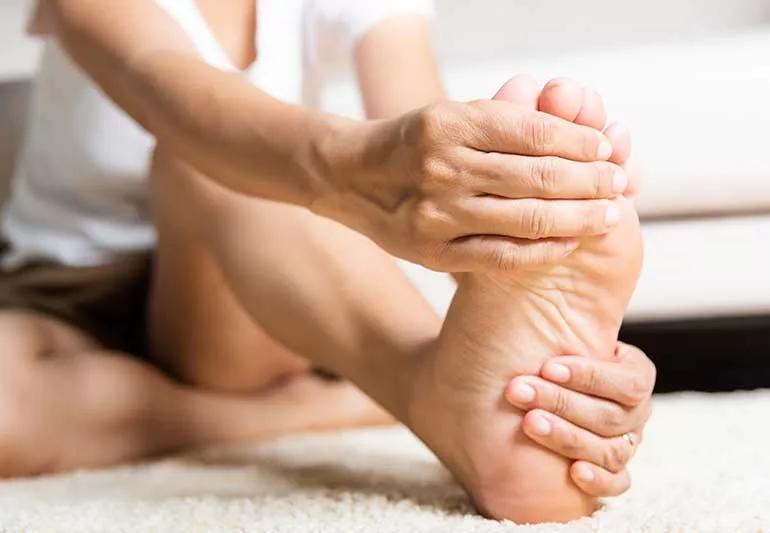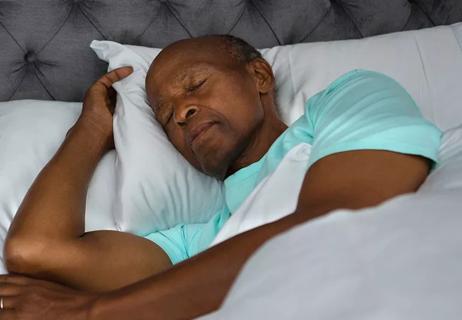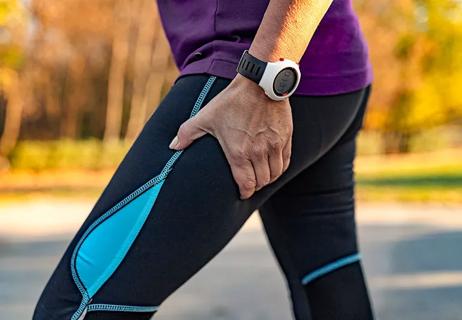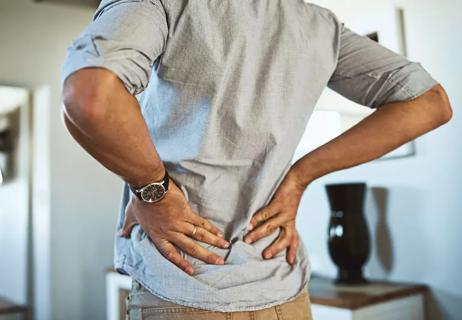It typically happens when blood flow is blocked when a limb rests in the same position too long

Odds are you’ve experienced one of your limbs falling asleep. Maybe it’s after sitting in a crossed-leg position for too long or sleeping on your arm overnight. And once that limb starts to “wake up,” that subsequent feeling of pins and needles can range from faintly ticklish to downright uncomfortable. But it gradually goes away after a couple of minutes.
Advertisement
Cleveland Clinic is a non-profit academic medical center. Advertising on our site helps support our mission. We do not endorse non-Cleveland Clinic products or services. Policy
Also known as paresthesia, this feeling of numbness and tingling is typical when a limb rests too long in a certain position putting pressure on a nerve in your arm or leg.
But there are some cases in which pins and needles are more constant and could be a sign of something else — like a pinched nerve or a neurological disorder.
Neuromuscular specialist Kerry Levin, MD, explains what this pins-and-needles feeling is and what you should do when you experience symptoms.
If you’ve ever experienced pins and needles, you’ve probably felt the tingling feeling on a limb that you’ve put pressure on.
The most common areas where you can experience pins and needles are your:
Some people can experience a pins-and-needles sensation in areas like their mouth or chest — but this likely means that there’s a different underlying cause for the symptom.
So, what exactly is going on inside your limb when you feel a sudden tingling and numbing like pins and needles?
This phenomenon can be caused by a range of factors, including specific conditions or physical injuries. The tingling sensation is due to brain, nerve or spinal cord irritation, which can be temporary or long-lasting.
If you’re feeling the tingling sensation of pins and needles, here are a couple of possible causes:
Advertisement
The most common cause of the classic pins-and-needles sensation is less a condition and more of a universal feeling that many of us have experienced in our bodies. This is when you suddenly feel a tingling or numbness after you’ve put pressure on a certain area of your body.
Here’s why it happens: If you’ve been sitting in a certain position for a long time or you fell asleep on top of your arm, the flow of blood is then blocked to that particular area. This causes your limb to “fall asleep” because the pathways for nerve signals are blocked.
Once you start to move out of that position, the blood starts rushing back, and then the nerve signals start firing off all at once — causing a tingling, slightly ticklish feeling through the affected area. Essentially, that annoying feeling is your limb “waking up.”
A constant feeling of pins and needles in one limb, either a foot or hand, may be a sign of a nerve being compressed due to a pinched nerve — usually due to an injury like a herniated disk or an underlying condition like rheumatoid arthritis.
A pinched nerve can cause a constant tingling feeling that’s similar to what you experience if a limb falls asleep, but you would also feel accompanying symptoms like muscle weakness and a sharp, dull ache in the affected area.
“Sciatica” is a term used to describe the sensation that occurs from a pinched nerve root in your spine, usually at the 5th lumbar or first sacral level of your spine. In this setting, numbness and pins-and-needles sensations may shoot down your leg from your back or buttock to your lower leg or foot. This can be set off by injury, such as a slipped disk or arthritis pushing on a nerve root.
Another condition that’s often linked to a pins-and-needles sensation is peripheral neuropathy — a condition that affects the nerves in your feet or hands. This condition is often caused by conditions like diabetes, vitamin deficiency or alcohol use disorder. Certain medications can also play a part in causing peripheral neuropathy, including antibiotics and chemotherapy.
Dr. Levin points out that when symptoms of numbness or tingling are constant in both feet, it may be a sign of peripheral neuropathy. In addition, you would also experience other symptoms like weakness, imbalance and muscle atrophy.
When we’re nervous, it’s natural to breathe faster. When this reaction takes on a life of its own, it is called hyperventilation. When severe it can feel like a panic attack. A natural feature of this reaction is a pins and needles sensation around the lips and at the feet and hands.
Advertisement
In some cases, pins and needles may be a sign of multiple sclerosis. In this setting, it’s brain or spinal cord damage that leads to these sensations.
Pins and needles may be caused by multiple sclerosis if you’re also experiencing accompanying symptoms such as:
If you’re feeling any of the above symptoms or are experiencing this tingling for long amounts of time, it’s important to talk to a healthcare provider about it.
The sensation of pins and needles is usually harmless and temporary — albeit, irritating in the moment. But there are some key signs to look for to make sure this feeling isn’t alerting your body to something more serious. If you’ve recently started a new prescription and you’ve noticed these symptoms occur out of nowhere, be sure to talk to your provider about what you’re experiencing.
In general, you should seek medical attention if your pins-and-needles sensation is paired with symptoms like:
If you’re experiencing certain accompanying symptoms and the pins-and-needles feeling isn’t going away after a long time, you should see a healthcare provider to get it checked out. If it’s your body’s way of warning you about an injury or another nerve-related condition, it’s best to get to the bottom of it as soon as possible.
Advertisement
Learn more about our editorial process.
Advertisement

Potential benefits include improved blood flow, which may help with athletic performance

Sciatica pain can keep you up — here’s how to get relief

5 noninvasive options for relief

Tips for getting relief from a common pain of pregnancy

How to find relief

Manual therapy offers relief without the unwanted side effects of medication

Most recommended precautions center around minimizing bruising or swelling

Type 2 diabetes isn’t inevitable with these dietary changes

Applying a hot or cold compress can help with pain